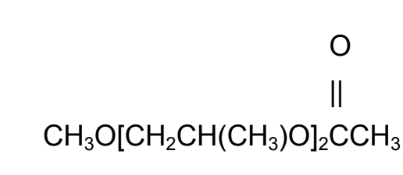DOWANOL DPMA GLYCOL ETHER ACETATE - DOW glycol ether stands as a remarkable alternative to DOWANOL DIPROPYLENE GLYCOL METHYL ETHER ACETATE, boasting similar properties while offering distinct advantages. Notably, it features a slower evaporation rate and a lower flammability rating, classified as Class III combustible for ease of handling, storage, and transportation. As one of the lowest viscosity members within the Dowanolâ„¢ glycol ethers family, contains an acetate group capping its molecule, reducing polarity and solvent viscosity. This feature, coupled with the elimination of reactive hydrogen, renders it an excellent solvent choice for urethanes and other proton-sensitive systems. Moreover, glycol ether exhibits outstanding active solvency across a wide spectrum of resin types, including acrylics, epoxies, alkyds, polyesters, and more, making it a versatile solution for various applications.
Chemical Name: Dipropylene Glycol Methyl Ether Acetate
CAS Number: 88917-22-0
Chemical Family: Glycol Ethers, Glycols
Labeling Claims: Animal Products-free, Bisphenol A-free, GMO-free
Features: Easy Handling, Good Resin Solvency, Low Evaporation Rate, Low Flammability, Low Polarity, Low Viscosity

